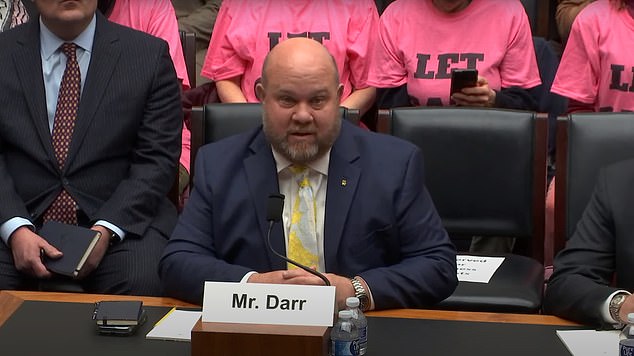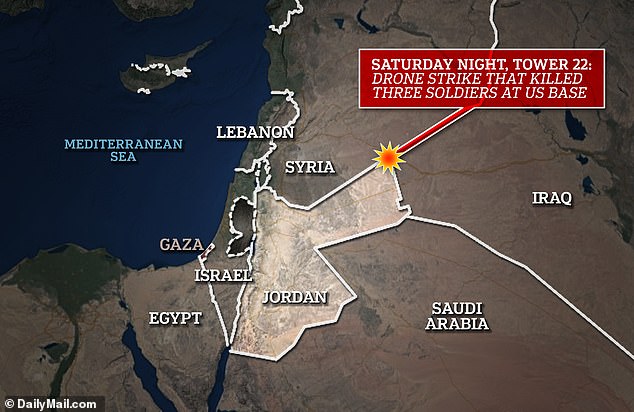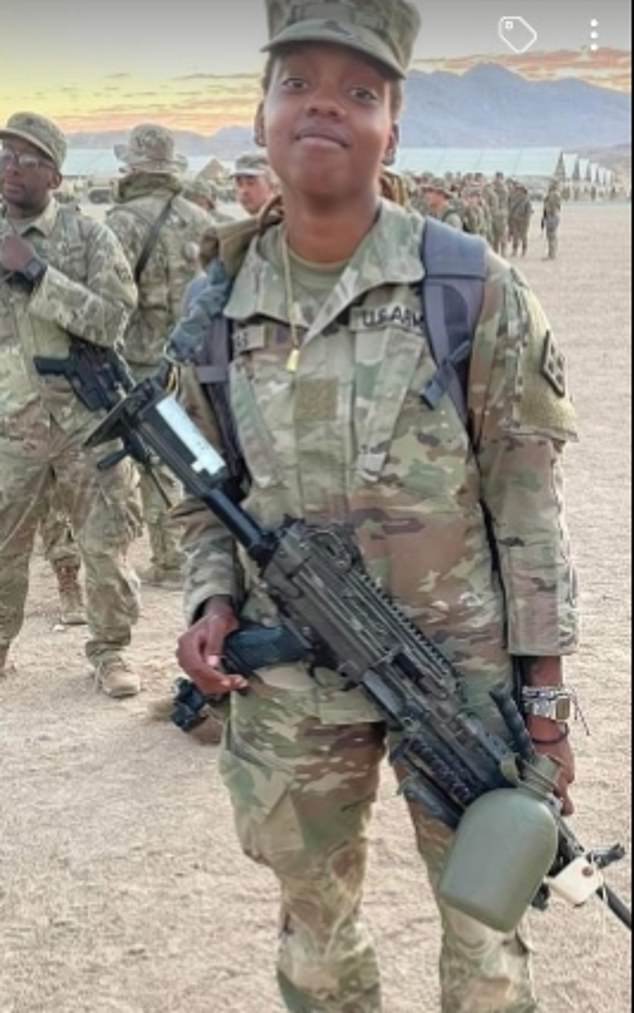Pro-Palestinian protesters Nancy Pelosi suggested are funded by China CRASH House hearing on threats to Red Sea shipping after three US troops killed by Iran proxy attack
A group of pro-Palestinian protesters have prevented a House of Representatives committee hearing on securing the Red Sea from Iranian proxy threats that endanger shipping lanes.
The group of older women, who apparently belong to the far-left Code Pink organization, painted their hands pink at the start of the hearing and held them up with their palms facing the cameras.
They wore neon pink shirts with the words “Let Gaza Live” and sat strategically behind the witnesses so that their clothing would appear on the livestream.
Former Speaker of the House of Representatives Nancy Pelosi has suggested that the anti-war group Code Pink is funded by China and also by Russia.
Pelosi shouted “go back to China” at Code Pink pro-Palestinian protesters who demonstrated outside her home last year in a now-viral video posted to their social media account.
Additionally, the top Democrat told CNN this week that she wants the FBI to investigate alleged “Russian financing” of pro-Gaza protesters.
Code Pink blasted Pelosi on Monday for the “slanderous attack,” claiming they have received “zero dollars” from “any other country.”
Protesters raised their pink-painted hands to show their support for Gaza

The group of female protesters strangely sat behind the witnesses to appear on the livestream of the hearing

The protest came a day after three US service members were identified after being killed in a drone strike that targeted a US military outpost in Jordan on Saturday.
“It is shameful for the former Speaker of the House of Representatives to insinuate that those who advocate peace are somehow un-American,” the group said.
Before the hearing began, Rep. Brian Mast of Florida told the group, “Israel didn’t start the fight, but they will end it.”
The protest came as lawmakers discussed dozens of Iran-backed Houthi attacks on civilian and military ships that have taken place since October.
Rebels backed by Iran were behind a drone strike late Saturday that claimed the lives of three US soldiers in the Middle East, identified yesterday.
The Houthis “have sought to disrupt global commerce by significantly increasing attacks on military and civilian vessels transiting the Red Sea,” Daniel Webster, chairman of the Coast Guard and Maritime Transport Subcommittee, said in his opening statement.
“To date, dozens of ships have been targeted, either by hijacking, attempted hijacking, or missile and drone attacks, putting ships and their crews at risk,” he continued.
The Houthis themselves have said the attacks are in retaliation for Israel’s war against Hamas in Gaza, which began after Hamas militants invaded Israel on October 7.
On November 19, the rebels seized a ship owned by an Israeli businessman and diverted it to Hodeida.

One of the US soldiers killed in a suicide drone attack on a base in Jordan has been identified as Kennedy Ladon Sanders (pictured)

Sergeant William Jerome Rivers, 46, of Carrollton, Georgia, died in the drone strike on a US air base in Jordan

Specialist Breonna Moffett, 23, from Savannah, Georgia, has been identified as one of the soldiers killed in the drone strike
Over the next two months, the Houthis targeted numerous ships transiting the Red Sea, the gateway to the Suez Canal – the fastest shipping route between Europe and Asia.
This month, the US, working with forces from Britain, has repeatedly fired missiles at Houthi-held assets in Yemen, which in turn has led the rebels to target more military and civilian ships used by the Red Sea sailing.
“Our ships are not combat ships and are not equipped to defend against these types of attacks,” testified David Heindel, president of the Seafarers International Union.
The area’s greatest needs for sailors, Heindel testified, are advanced secure communications systems and “direct communications between our ships and combat ships in the area.”
